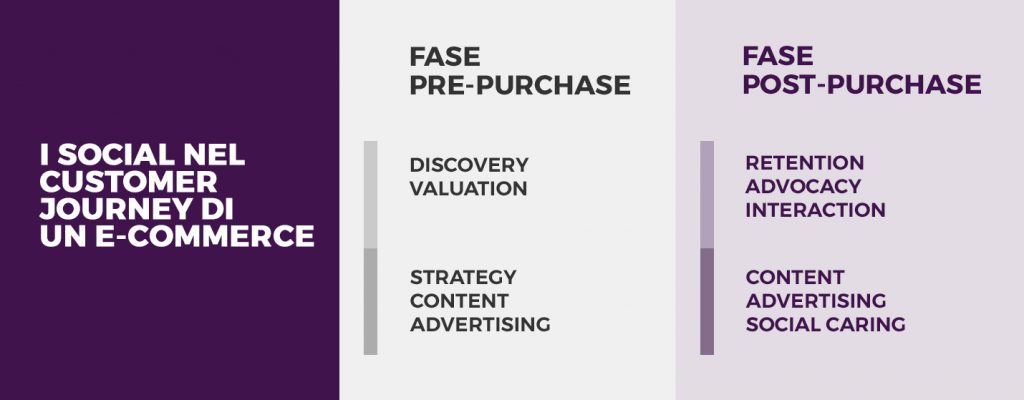According to the “Digital 2020” report conducted by We Are Social, social media use is growing in Italy. As of today, about 35 million people access one of the main platforms (YouTube, Facebook, Instagram and co.) at least once a month.
In addition to a relative growth in the overall number of users, compared to 2019, the time spent on social media is also on the rise: 1 hour and 57 minutes per day. An extremely interesting figure, which indicates the weight of social media within the so-called “digital diet” of Italians.
We have entered a phase of platform change, thanks to the continual introduction of new features that allow people to express themselves in different languages and connect directly with brands (e.g., Augmented reality, Virtual reality).
Based on these considerations, we can say that, at present, social media is confirmed as a fundamental channel for brands to get in touch with their consumers or potential consumers. This is also and especially true for all those brands that make online sales their core business.
Let’s see together how social media intervenes within the so-called customer journey of an e-commerce, which as we know turns out to be extremely nonlinear and fragmented.
From our point of view-from the experience we develop every day working closely with our clients-we can assume such a scenario:

As indicated in the slide, social media mainly intervene in two phases of the customer journey, which we might call “pre-purchase” and “post-purchase.”
PRE-PURCHASE PHASE
In the pre-purchase phase, social channels intervene in the so-called “Discovery & Valuation” levels: by developing a coherent content strategy and allocating a media budget, brands can intercept new users, engaging them within their communities on social channels.
Once an initial level of trust has been gained, brands can proceed to share content and initiatives that can offer hooks that will pull users into the purchase phase, influencing the “evaluation” in a positive key.
The most common mistake is to consider social channels as mere showcases within which to tell about the brand and its products. This is certainly true, but it is only part of the opportunities offered by these ecosystems.
Facebook, Instagram, YouTube, Tiktok are platforms that provide a number of tools-primarily related to advertising-that are very powerful and refined, thanks to which it is possible to identify targets within the customer journey by influencing their behaviors.
POST-PURCHASE PHASE
In what we call the “Post-Purchase” phase, social channels allow us to work on the levels of “Retention, Advocacy & Interaction,” where by “Interaction” we mean the possibility of establishing a post-purchase relationship.
In this case, users expect not to be left alone in case of problems. It is no coincidence that more and more people are using social media as a direct channel for assistance.
According to a Splinker report, 80 percent of consumers interact online with brands, while 54 percent prefer to seek assistance through social messaging apps rather than using phone or e-mail.
Constantly manning these channels, through a fast and relevant social caring service (perhaps with chatbot support), is therefore also of paramount importance for the entire brand reputation.
For the “Retention” level, social media can be activated – again through strategy, content and advertising – to forge a strong relationship with those who have already purchased, prompting them to make a second purchase (and, why not, to true loyalty), positively impacting customer lifetime value.
For the “Advocacy” level, on the other hand, social channels should be considered as a perfect ally for the development and growth of brand communities of fans, useful for the activation of organic word-of-mouth that can increase brand awareness in a positive key.
CONCLUSIONS
As we have seen, it is of paramount importance for an online business (and beyond) to properly preside over social platforms.
By integrating these channels within digital marketing strategies-taking into account the habits of users and the potential offered by these tools-it is possible to improve the performance of the entire project, actually affecting the results in terms of revenue as well.
